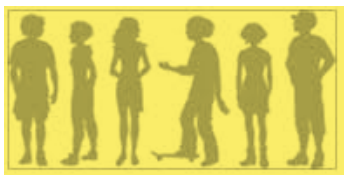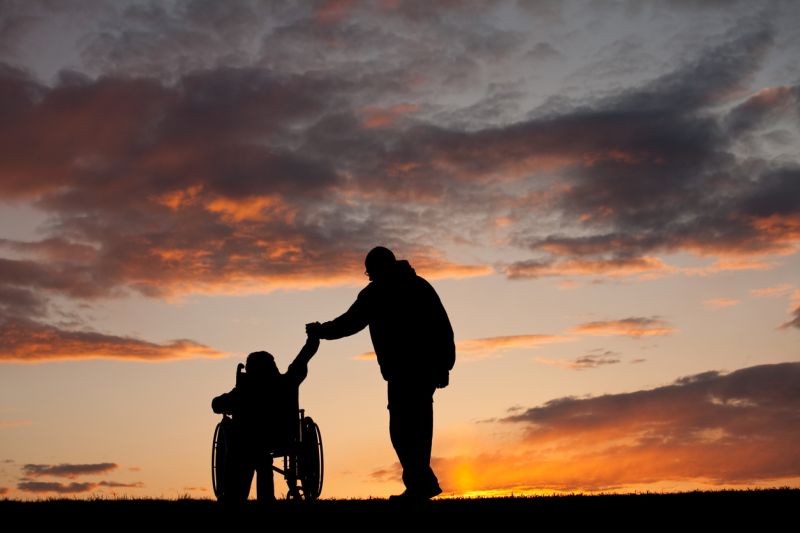Supporting Positive Behaviour
Introduction
As carers and whānau we sometimes need to respond to behaviour that may be unpleasant, challenging and socially unacceptable. This information is provided to carers and whānau as an aid to learning an interactional method of teaching and adapting to behaviour.
There are many different approaches to successfully managing (and changing) behaviour we might find challenging. This brief resource is intended to give carers and whānau a basic understanding and clues to achieving this. It is not a replacement for talking with someone skilled in this area regarding a complex situation you may be involved in.
Critical to this approach is the recognition that there has to be the creation of good and fair relationships between the carer, whānau and the individual. The way this is done varies from person to person, depending on history, ability, etc.
Since this is an interactional approach, the behaviour of all significant individuals is considered to be of importance. That means, the ‘problem’ behaviour is not seen in isolation, but rather seen in a social context, where the behaviour of each individual effects every other person in the group (including whānau).
If we wish to alter a person’s behaviour, we generally have to change what we do ourselves to some extent. We look at the carers or whānau behaviour, how it may be altered by the challenging behaviour of the person, and the difficulties we may encounter in controlling our own behaviour under trying circumstances, etc. We examine a few of the necessary personal requirements for working with someone whose behaviour may challenge us. Then we look at what measures can be taken to prevent the development and build up of behavioural difficulties.
Positive Behaviour Support (PBS)
- Is a person-centred approach
- Non aversive (does not use punishment)
- An effective intervention approach
- Reduces the frequency intensity and duration of behaviours of concern
- Sits alongside the ‘rights of the person’ with a disability and Human Rights and EGL Principles
What is Challenging Behaviour?
It is mainly used to describe
- Putting the physical safety of people at risk
- Causing difficulties that limit a person’s ability to have a good life
Why is it called Challenging Behaviour?
A person’s behaviour is called challenging because it challenges those who support the person.
It is important to understand why this challenging behaviour is happening and to work together to find a solution
What language is often used to describe a person’s challenging behaviour?
- Difficult
- Behaviours of concern
- Angry
- Violent
- Annoying
- Attention seeking
- Inappropriate
- Unsocial
- Rude
- Inattentive
- Withdrawn
- Challenging
Lets rethink that ……… Could the persons behaviour be ………

- A way to communicate
- I don’t understand
- Telling us what is wrong or missing
- That’s too confusing
- That’s too loud
- I’m unwell, hungry, tired
- I’m bored, frustrated
- Notice me, listen to me, acknowledge me, include me
- Leave me alone
- I want a friend/relationship
- What else??
What other reasons are there that people might behave in a challenging way?
All behaviour serves a purpose and is functional
Our challenge as family/whanau, support people , teachers is to work out what that function is.
Lets look a bit closer

Challenging Behaviour is often attributed to the person demonstrating the behaviour
However, the challenge often belongs to the people surrounding the person
We need to ask….
- Why does the person need to engage in that behaviour?
- What can we do to support the person
Challenging behaviours are often messages that can tell us important things about the person and the quality of their life
- We need to look at the ‘whole picture’
- We need to be the ‘detective’
- We need to observe
Its not about changing the person – its about changing ………
- The environment
- Systems
- Practices
- Supporting the person to make positive behaviour choices
Challenging behaviour – things to consider
Routines and rituals
Predictable environments and familiar routines might be important and could cause confusion if broken. For example, a change of teacher, change in route that is taken, change of activities, change in the way something is normally done.
Transitions
Understanding it’s time to move on from one activity to another. Or changing environments, home, new activities, new people, classroom, school set
Sensory sensitivities and Sensory overload
Is the environment, too loud, bright, noisy, confusing, too many people, different smells, too overwhelming, too much.
Unrealistic expectations
Is the person frustrated if they’re expected to do something they don’t have the skills for, like getting dressed independently, following or completing a task.
Discomfort
This could include things like the feeling of clothes against skin, a prickly label, wet pants, a bump or pain..
Challenging behaviour – More things to consider
- Why does the person behave in this way?
- Can we modify the environment that triggers the behaviour?
- Can we teach the person new skills to meet their needs so they can use new skills not the challenging behaviour?
- Have we got clear strategies to safely manage the situation?
- Is the person having trouble understanding what’s happening around them – for example, what other people are saying or communicating non-verbally?
- Does the person have effective ways of communicating their own wants and needs- e.g communication devices, sign language, body language etc
- What do they like to do, what are they good at?
- Anything else?………
De-escalation Tips
- Stay calm
- Manage your own response
- Set limits
- Handle challenging questions
- Prevent physical confrontation
Some strategies to try ………

Set clear expectations
Clear routines, prepare for changes e.g. social stories, visits, discussion.
Be consistent
Consistency across environments (e.g. school, home)
Model Positive behaviour
Behaviour specific praise e.g. “that’s great Luke that you waited for your turn to choose a game”
Acknowledge effort
Talk about what went well
Resources and Support
Education-
- RTLB (Resource Teacher Learning and Behaviour)
- IWS (Intensive Wraparound Support)
- Psychologists
- Behaviour support
- Incredible years programme (Education)
- School counsellors (secondary)
- Aroha’s Way – Anxiety Resource


